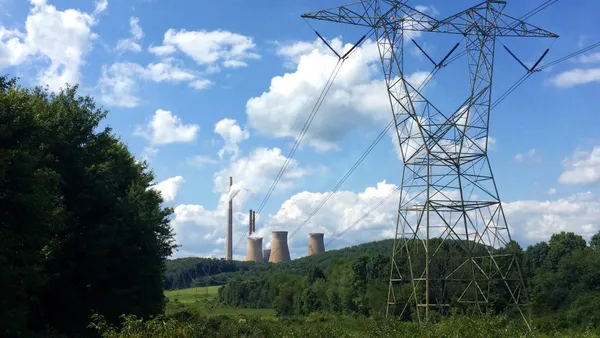Dive Brief:
- Category 1 Hurricane Nate made landfall twice in the Gulf Coast and left more than 100,000 residents in Alabama, Mississippi and Florida in the dark at one point Sunday afternoon, according to a report from the Department of Energy.
- Nate has since been downgraded to a Tropical Depression, and the Weather Channel reports roughly 60,000 residents of the affected states are still without power.
- The damage from Nate isn't as widespread and devastating as its predecessors, Harvey, Maria and Irma, but it highlights the ongoing conversations within the power sector over grid resilience in the face of severe storms.
Dive Insight:
Add Hurricane Nate to the growing list of storms battering islands in the Gulf of Mexico and Gulf Coast states. Barely a month after Hurricanes Maria, Harvey and Irma swept through the Atlantic and up the Gulf Coast, Hurricane Nate left its mark on Florida, Alabama and Mississippi.
Power outages reached more than 100,000 for these states, a DOE report stated, and a combined 60,000 homes were still without power as of Sunday night. Alabama Power, a subsidiary of Southern Co., is bringing in more than 1,000 linemen to help with restoration efforts.
Meanwhile, power restoration efforts for U.S. territory Puerto Rico are slow after Hurricane Maria pummeled the island nearly a month ago and virtually obliterated its grid . As of Sunday, only 11.7% of customers had power. But major power plays, such as Tesla and Sonnen, are pledging to send battery packs and build microgrids to alleviate some of the damage.
Tesla CEO Elon Musk tweeted last week that the company could help the island rebuild its grid, with Gov. Ricardo Rosello tweeting back "let's talk". Gov. Rosello later tweeted that the initial conversation went well.
Great initial conversation with @elonmusk tonight. Teams are now talking; exploring opportunities. Next steps soon to follow.
— Ricardo Rossello (@ricardorossello) October 7, 2017
The spate of intense storms underscores a report from the Union of Concerned Scientists two years ago that noted the Southeast, particularly Florida, was already vulnerable to severe storms. But the power sector is starting to take notice, and conversations have already begun over the usefulness of microgrids and solar-plus-storage systems as a way to boost grid resilience.














